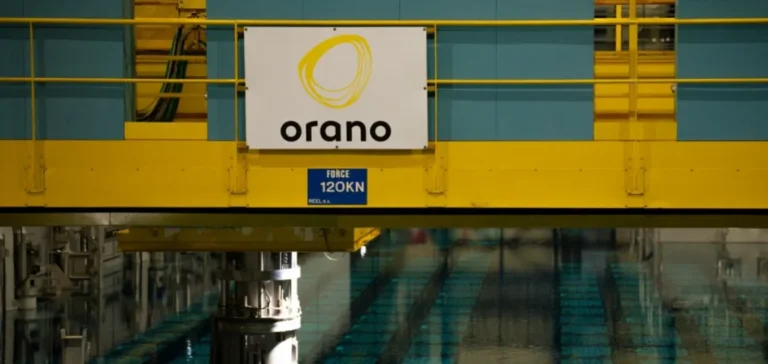French group Orano, specialised in the nuclear fuel cycle, has launched a trial programme of a humanoid robot at its MOX production facility in Melox, located in the Gard department. This marks a global first for a nuclear installation, according to the site’s management. Named Hoxo, the 1.35-metre-tall robot, developed with French IT company Capgemini, will be evaluated over four months in controlled operational conditions.
A robot designed to operate in human environments
Hoxo is equipped with embedded artificial intelligence, real-time sensors, autonomous navigation capabilities and a human-machine interaction system. Its humanoid form was designed to operate in facilities originally built for human operators. Capgemini, which supplies the software solutions for this Chinese-designed robot, presented the prototype at the World Nuclear Exhibition.
The aim is to explore the robot’s potential to assist staff in physically demanding or low-value-added tasks while reducing their exposure to radiological risks. Initial trials will take place at the Orano Training Centre, located at the Melox site.
Initial operational uses identified
Among the identified use cases, the robot could support teams by transporting tools to maintenance sites, conducting radiological sampling or assisting in handling radioactive drums. The project aims to demonstrate the robot’s added value in specific tasks, supporting rather than replacing existing personnel.
According to Orano Melox’s quality and performance management, Hoxo could also be used to ensure adherence to industrial standards, acting as a complementary observer during technical interventions. The company plans to involve a wide range of employees to identify additional tasks that could benefit from partial automation via this robotic solution.
Potential for broader deployment in the sector
This trial is part of a broader initiative to integrate intelligent robotics into nuclear industrial environments. By exploring human-machine complementarity, Orano aims to assess the feasibility of broader deployment across its facilities. The use of such robots could address issues of safety, workforce availability and ergonomics in a sector with high technical requirements.






















